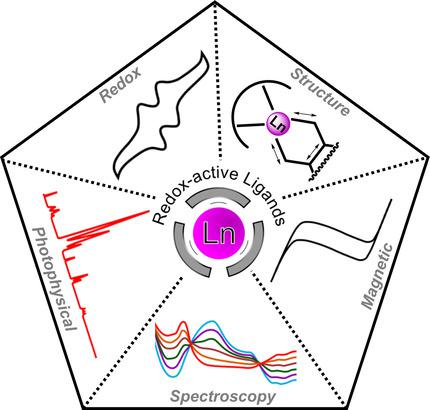当前位置:
X-MOL 学术
›
Chem. Eur. J.
›
论文详情
Our official English website, www.x-mol.net, welcomes your
feedback! (Note: you will need to create a separate account there.)
Lanthanoid Complexes as Molecular Materials: The Redox Approach
Chemistry - A European Journal ( IF 3.9 ) Pub Date : 2020-09-23 , DOI: 10.1002/chem.202003761 Moya A Hay 1 , Colette Boskovic 1
Chemistry - A European Journal ( IF 3.9 ) Pub Date : 2020-09-23 , DOI: 10.1002/chem.202003761 Moya A Hay 1 , Colette Boskovic 1
Affiliation

|
The development of molecular materials with novel functionality offers promise for technological innovation. Switchable molecules that incorporate redox‐active components are enticing candidate compounds due to their potential for electronic manipulation. Lanthanoid metals are most prevalent in their trivalent state and usually redox‐activity in lanthanoid complexes is restricted to the ligand. The unique electronic and physical properties of lanthanoid ions have been exploited for various applications, including in magnetic and luminescent materials as well as in catalysis. Lanthanoid complexes are also promising for applications reliant on switchability, where the physical properties can be modulated by varying the oxidation state of a coordinated ligand. Lanthanoid‐based redox activity is also possible, encompassing both divalent and tetravalent metal oxidation states. Thus, utilization of redox‐active lanthanoid metals offers an attractive opportunity to further expand the capabilities of molecular materials. This review surveys both ligand and lanthanoid centered redox‐activity in pre‐existing molecular systems, including tuning of lanthanoid magnetic and photophysical properties by modulating the redox states of coordinated ligands. Ultimately the combination of redox‐activity at both ligands and metal centers in the same molecule can afford novel electronic structures and physical properties, including multiconfigurational electronic states and valence tautomerism. Further targeted exploration of these features is clearly warranted, both to enhance understanding of the underlying fundamental chemistry, and for the generation of a potentially important new class of molecular material.
中文翻译:

镧系元素复合物作为分子材料:氧化还原方法
具有新颖功能的分子材料的开发为技术创新提供了希望。结合了氧化还原活性成分的可转换分子由于具有电子操纵的潜力,因此诱人了候选化合物。镧系金属以其三价态最为普遍,通常镧系元素络合物的氧化还原活性仅限于配体。镧系元素离子的独特电子和物理性质已被广泛用于各种应用,包括磁性和发光材料以及催化领域。镧系元素络合物对于依赖可切换性的应用也很有希望,在该应用中,可通过改变配位体的氧化态来调节物理性质。基于镧系元素的氧化还原活性也是可能的,包括二价和四价金属的氧化态。因此,利用氧化还原活性镧系金属为进一步扩展分子材料的功能提供了一个有吸引力的机会。本文综述了既有分子系统中以配体和镧系元素为中心的氧化还原活性,包括通过调节配位体的氧化还原态来调节镧系元素的磁性和光物理性质。最终,在同一分子的配体和金属中心的氧化还原活性的组合可以提供新颖的电子结构和物理性质,包括多构型电子态和价互变异构。显然有必要进一步针对这些特征进行有针对性的探索,以增强对基本化学基础的理解,
更新日期:2020-09-23
中文翻译:

镧系元素复合物作为分子材料:氧化还原方法
具有新颖功能的分子材料的开发为技术创新提供了希望。结合了氧化还原活性成分的可转换分子由于具有电子操纵的潜力,因此诱人了候选化合物。镧系金属以其三价态最为普遍,通常镧系元素络合物的氧化还原活性仅限于配体。镧系元素离子的独特电子和物理性质已被广泛用于各种应用,包括磁性和发光材料以及催化领域。镧系元素络合物对于依赖可切换性的应用也很有希望,在该应用中,可通过改变配位体的氧化态来调节物理性质。基于镧系元素的氧化还原活性也是可能的,包括二价和四价金属的氧化态。因此,利用氧化还原活性镧系金属为进一步扩展分子材料的功能提供了一个有吸引力的机会。本文综述了既有分子系统中以配体和镧系元素为中心的氧化还原活性,包括通过调节配位体的氧化还原态来调节镧系元素的磁性和光物理性质。最终,在同一分子的配体和金属中心的氧化还原活性的组合可以提供新颖的电子结构和物理性质,包括多构型电子态和价互变异构。显然有必要进一步针对这些特征进行有针对性的探索,以增强对基本化学基础的理解,











































 京公网安备 11010802027423号
京公网安备 11010802027423号